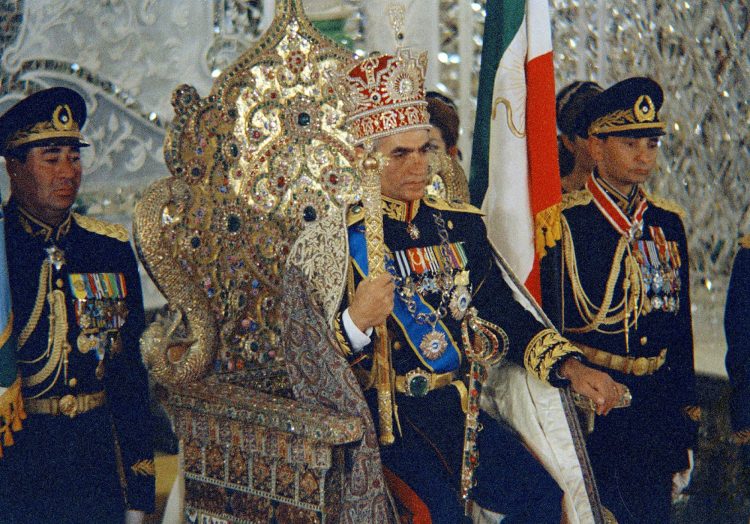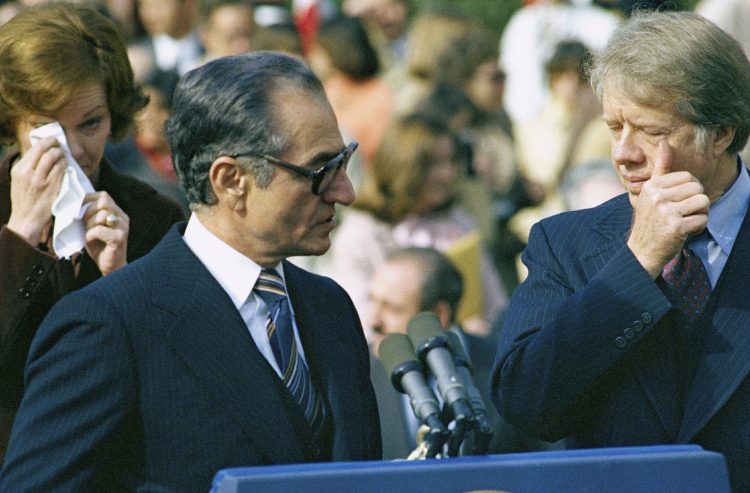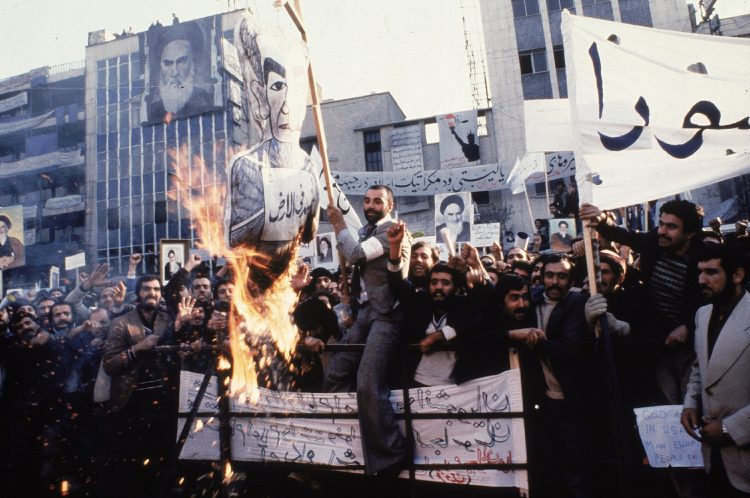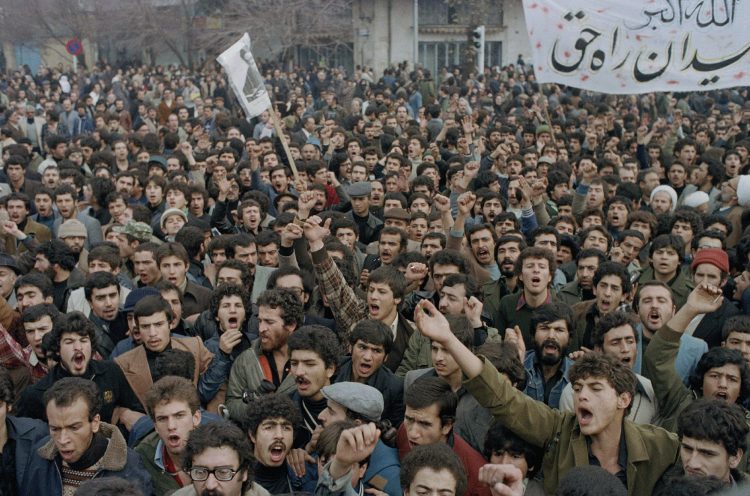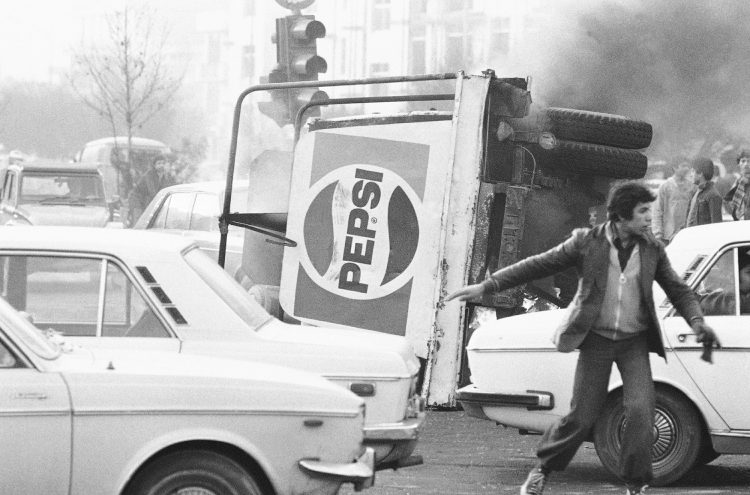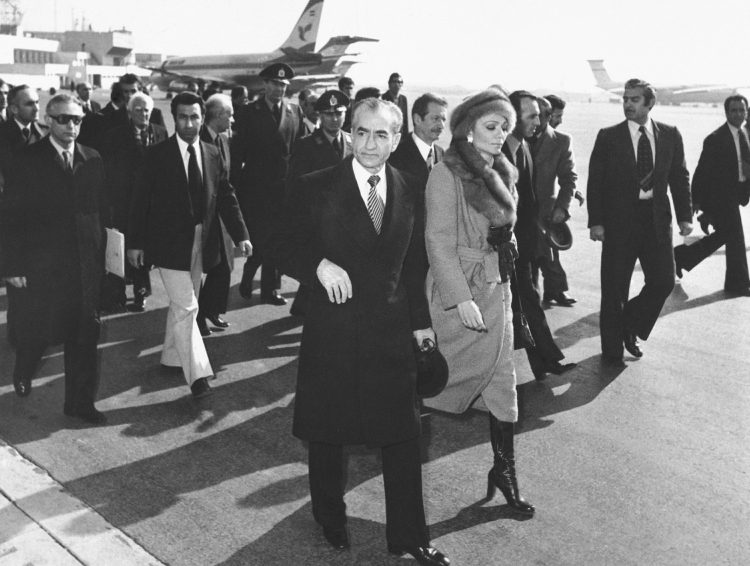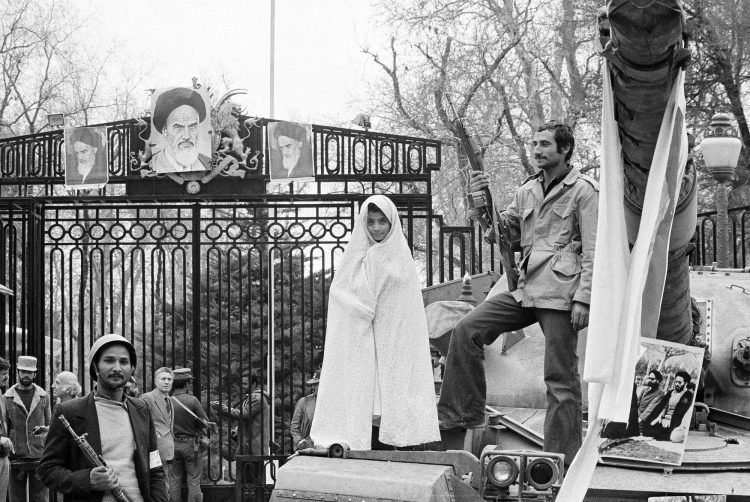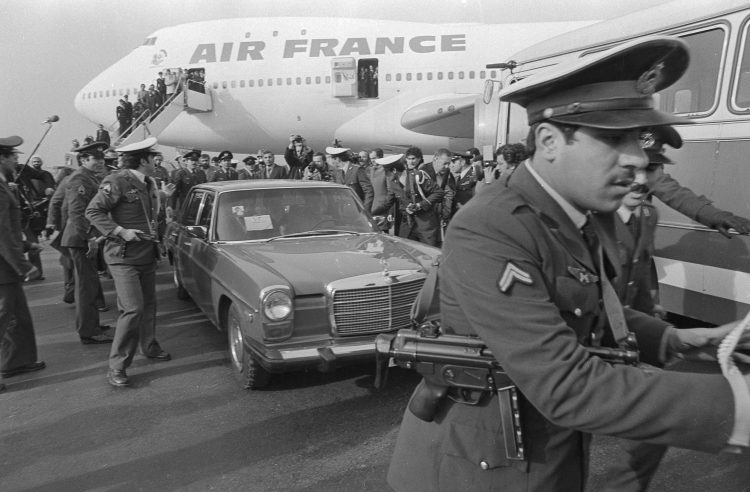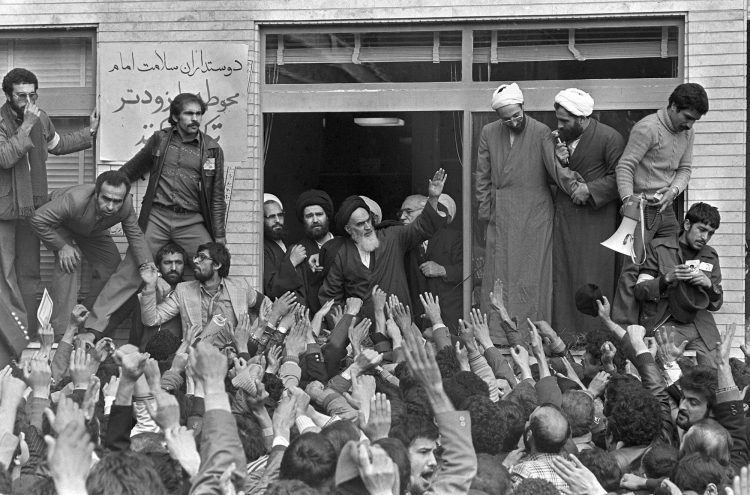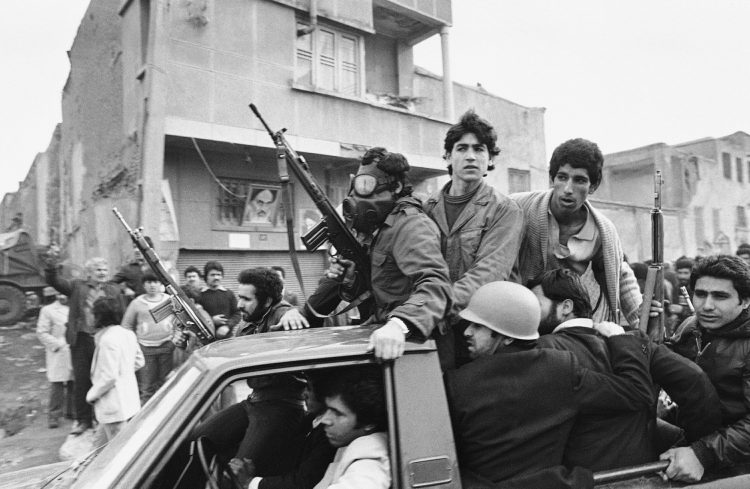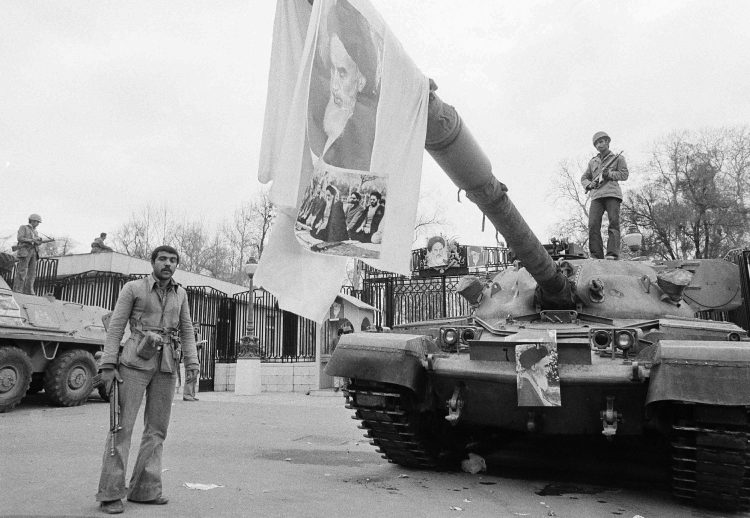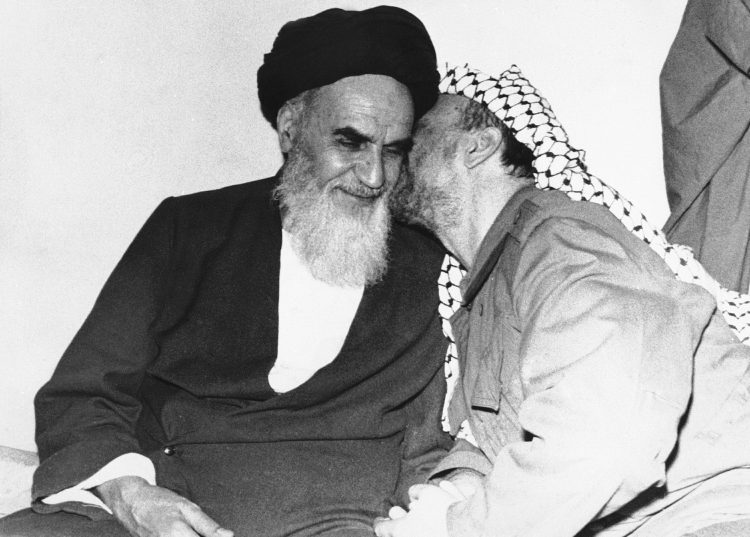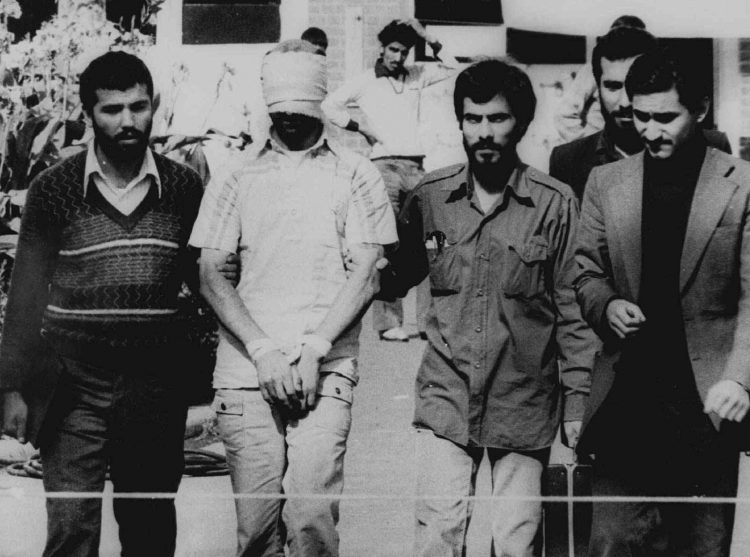Forty years ago, Iran’s military said it wouldn’t stand in the way of revolutionaries and returned to its barracks, signaling the end of the rule of the shah.
The effects of the 1979 Islamic Revolution, including the takeover of the U.S. Embassy in Tehran and the ensuing hostage crisis, have reverberated through decades of tense relations between Iran and America.
Here are the key moments leading up to Iran’s 1979 Islamic Revolution and the hostage crisis.
UNREST AHEAD OF THE SHAH’S DEPARTURE
—Jan. 7, 1978 —Religious riots break out in the holy city of Qom. Seven demonstrators are killed, setting off a cycle of anti-shah violence on each successive 40th day of mourning.
—Aug. 18 —Shah Mohammad Reza Pahlavi blames Soviet-backed Communists for mounting violence.
—Aug. 19 —Hundreds die in an intentionally set fire at a cinema in the southern city of Abadan. Authorities and the opposition blame each other for the fire, which triggers unrest across Iran’s oil-rich regions.
—Sept. 8 —Martial law is imposed in Tehran and 11 other cities after 100,000 anti-shah demonstrators stage a protest march in the Iranian capital. Troops open fire on demonstrators in the capital’s Jaleh Square, killing 121 and wounding 200.
—Sept. 11 —President Jimmy Carter calls the shah to reaffirm the “close, friendly relationship” between the United States and Iran.
—Oct. 2 —Civil service strikes spread throughout Iran.
—Oct. 6 —Ayatollah Ruhollah Khomeini is forced to leave Iraq for France. He had lived in exile in Iraq since the failure of a religious revolt against the shah’s 1963 land reform that deprived the clergy of its holdings.
—Oct. 31 —Iran’s petroleum exports are disrupted as oil workers begin wildcat strikes that ultimately reduce production from 5 million barrels daily to a trickle.
—Nov. 5 —Anti-shah demonstrators rampage in Tehran. Ten demonstrators are reported killed.
—Nov. 6 —Cabinet resigns and is replaced by a military government headed by Gen. Gholam-Reza Azhari, Iran’s armed forces chief of staff. Several newspaper editors are arrested and censorship is imposed, prompting a two-month newspaper strike for two months. The shah pledges that “past mistakes of unlawfulness, cruelty and corruption will not be repeated.”
—Nov. 13 —Anti-Americanism intensifies. An exodus of Americans begins that reduces their number from 45,000 to 12,000 by January.
—Nov. 25 —From Paris, Khomeini calls for resistance against the “illegal” military government.
—Dec. 8 —Rioters burn down the headquarters of the U.S. Grumman Aircraft Corp. in Isfahan, some 350 kilometers (215 miles) miles south of Tehran.
—Dec. 10 —Anti-shah demonstrations, estimated at between 300,000 and 2 million people, take part in a peaceful march.
—Dec. 24 —U.S. Marines fire tear gas at a mob trying to storm the U.S. Embassy in Tehran.
—Dec. 29 —The shah asks Shahpour Bakhtiar of the opposition National Front to form a new civilian government.
—Jan. 1, 1979 —The shah appears before reporters for the first time in two months and concedes he “would love” to go on vacation “if the situation permits.”
—Jan. 4 —Bakhtiar is appointed prime minister.
—Jan. 13 —The shah appoints a regency council to represent the crown during his absence, while Khomeini announces from Paris the formation of a revolutionary council to prepare for an “Islamic Republic.”
—Jan. 16 —The shah departs Iran at the controls of a jetliner, never to return. Demonstrators cheer his departure.
____________________________________________________________________________________________________________
THE REVOLUTION TAKES HOLD
—Feb.1 —Khomeini returns from exile.
—Feb. 9 —Imperial guard troops are sent to quell a pro-Khomeini demonstration by air force cadets at a base in Farahabad, on Tehran’s southern outskirts.
—Feb. 10 —Islamist and leftist guerrillas battle imperial guard troops around the Farahabad base, forcing the shah’s troops to retreat with heavy losses. Joe Alex Morris Jr., Middle East correspondent of the Los Angeles Times, is shot and killed during the battle.
—Feb. 11 —Iran’s general staff declares the neutrality of the armed forces and troops are ordered back to their barracks, guaranteeing the Islamic Revolution’s success. The action dooms the Bakhtiar government and the prime minister flees Tehran, ultimately to take up exile in France.
____________________________________________________________________________________________________________
THE HOSTAGE CRISIS LOOMS
—Feb. 14 —The U.S. Embassy in Tehran is overrun, allegedly by leftist guerrillas who later are driven off by revolutionary guardsmen loyal to Khomeini. One Iranian is killed and 101 hostages are temporarily held by the attackers. The hostages include U.S. Ambassador William Sullivan and 19 Marines. A mass evacuation of Americans remaining in Iran is directed.
—Feb. 16 —Revolutionary justice is inaugurated with the execution by firing squad of four top generals, including the former head of the secret police. More than 500 other people, many of them army officers, former ministers, secret police agents, Kurdish rebels and Arab dissidents are executed in the coming months.
—Feb. 18 —Palestinian leader Yasser Arafat becomes the first foreign leader to visit Khomeini.
—March 5 —Iran resumes oil exports for the first time since anti-shah labor strikes shut down oil production.
—March 6 —Iran announces the shah will be tried in absentia.
—March 19 —About 170 people are reported dead in two days of fighting in Sanandaj in fighting between Kurdish rebels and revolutionary guards. The Kurds step up demands for autonomy.
—March 30 —Millions of Iranians heed Khomeini and vote “yes” in a referendum on replacement of the monarchy with an Islamic revolutionary regime.
—May 13 —Ayatollah Sadeq Khalkhali, chief of Tehran’s revolutionary court, calls for the assassination of the shah, some members of his family and former high-ranking officials who escaped abroad.
—May 30 —Three days of heavy fighting in the southern port city of Khorramshahr between Arabs seeking autonomy and revolutionary guards kills 100 people, according to an Arab count. Iran later accuses Iraq of supporting the Arab rebels.
—Aug. 3 —Iranians elect a clergy-dominated 73-member Assembly of Experts to formulate and ratify a new constitution. The election is boycotted by the National Front.
—Sept. 4 —The Iranian government orders The Associated Press to close its Tehran bureau, complaining that reports of fighting between government troops and Kurdish rebels had been “basically untrue.” Four AP correspondents are ordered to leave the country.
—Oct. 23 —The shah is given permission to enter the United States and is admitted to a New York City hospital for removal of a gallbladder and to undergo treatment for cancer.
—Nov. 4 —Militant Iranian students overrun the U.S. Embassy in Tehran after a three-hour struggle. They take hostages, including 62 Americans, demanding the extradition of the shah.
AP
Also read:
